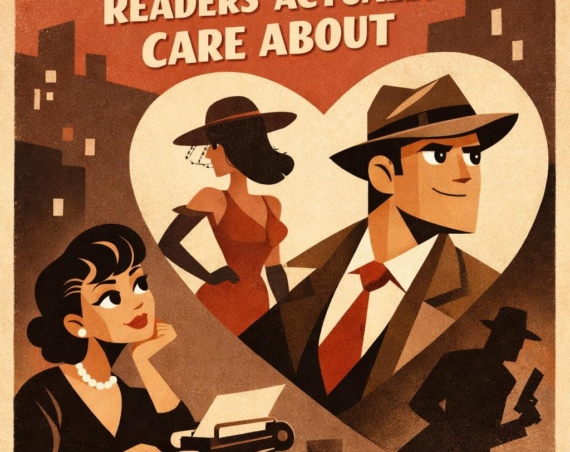An autobiography is a self-written account of one’s life, usually focusing on the most significant events, experiences, and achievements that shaped the person’s identity and worldview. Writing an autobiography can be a rewarding and cathartic process, as well as a way to share your story with others and leave a legacy. However, it can also be daunting and overwhelming, especially if you don’t know where to start or how to organize your thoughts. In this article, we will provide some tips and guidelines on how to write an autobiography that is engaging, authentic, and meaningful.
1. Define your purpose and audience
Before you start writing your autobiography, you need to have a clear idea of why you are writing it and who you are writing it for. This will help you decide on the tone, style, and content of your book. Some possible purposes and audiences for writing an autobiography are:
- To reflect on your life and learn from your experiences
- To inspire or educate others who share similar backgrounds or challenges
- To document your family history or cultural heritage
- To promote your personal brand or professional achievements
- To entertain or amuse your readers with your anecdotes and humor
Depending on your purpose and audience, you may want to emphasize different aspects of your life, such as your childhood, education, career, relationships, hobbies, travels, etc. You may also want to consider how much detail and privacy you want to include in your autobiography. For example, if you are writing for a general audience, you may want to avoid revealing sensitive or controversial information that could harm yourself or others. On the other hand, if you are writing for a close circle of friends or family, you may want to be more candid and intimate in your narration.
2. Choose a theme and structure
Once you have defined your purpose and audience, you need to choose a theme and structure for your autobiography. A theme is the main message or lesson that you want to convey through your story. A structure is the way you organize your story into chapters or sections. Choosing a theme and structure will help you focus your writing and make it more coherent and compelling. Some possible themes and structures for writing an autobiography are:
- Chronological: This is the most common and straightforward structure, where you narrate your life from birth to present (or until a certain point) in chronological order. This structure is suitable for comprehensive and detailed autobiographies that cover all the major events and phases of your life.
- Thematic: This is a more creative and flexible structure, where you group your life events into themes or categories that relate to your purpose or message. For example, you could write about your achievements, challenges, passions, influences, etc. This structure is suitable for focused and concise autobiographies that highlight specific aspects of your life.
- Anecdotal: This is a more informal and humorous structure, where you tell stories or anecdotes that illustrate your personality, character, or values. For example, you could write about funny incidents, memorable moments, embarrassing situations, etc. This structure is suitable for entertaining and engaging autobiographies that showcase your voice and style.
You can also combine different structures or use variations of them to suit your preferences and goals. For example, you could use a chronological structure with thematic subheadings, or an anecdotal structure with flashbacks or foreshadowing.
3. Gather and organize your material
After you have chosen a theme and structure for your autobiography, you need to gather and organize your material. This includes researching, collecting, and sorting out any sources of information that can help you recall and reconstruct your life story. Some possible sources of information are:
- Personal records: such as journals, diaries, letters, emails, photos, videos, etc.
- Public records: such as birth certificates, school reports, diplomas, awards, etc.
- Oral histories: such as interviews with yourself or others who know you well
- Secondary sources: such as books, articles, documentaries, etc. that relate to your life events or topics
You can use various methods to organize your material, such as timelines, outlines, mind maps.
4. Write your first draft
Once you have gathered and organized your material, you can start writing your first draft. This is the stage where you put your thoughts and memories into words, following your theme and structure. Don’t worry too much about grammar, spelling, or style at this point. Just focus on getting your ideas and emotions on paper. Some tips for writing your first draft are:
- Start with an attention-grabbing introduction that hooks your readers and introduces your theme and purpose
- Use vivid and descriptive language that appeals to the senses and emotions of your readers
- Use dialogue, quotes, or direct speech to make your narration more lively and realistic
- Use transitions, connectors, or signposts to guide your readers through your story and show the relationships between events
- End with a strong conclusion that summarizes your main points and leaves a lasting impression on your readers
5. Revise and edit your draft
After you have written your first draft, you need to revise and edit it to improve its quality and clarity. This is the stage where you check and correct any errors or weaknesses in your content, structure, language, or style. You may need to rewrite, add, delete, or rearrange parts of your draft to make it more coherent and compelling. Some tips for revising and editing your draft are:
- Read your draft aloud or have someone else read it to you to catch any mistakes or awkward sentences
- Use feedback from others who have read your draft to identify any areas that need improvement or clarification
- Use online tools or resources such as dictionaries, thesauruses, grammar checkers, etc. to help you polish your language and style
- Use formatting elements such as headings, subheadings, bullet points, etc. to make your text more readable and organized
6. Publish or share your autobiography
The final step in writing an autobiography is to publish or share it with your intended audience. This can be done in various ways, depending on your preferences and goals. Some possible ways to publish or share your autobiography are:
- Print: such as books, magazines, newspapers, etc.
- Digital: such as ebooks, blogs, websites, social media platforms, etc.
- Audio: such as podcasts, audiobooks, radio shows, etc.
- Video: such as documentaries, vlogs, YouTube channels, etc.
Whatever method you choose, make sure to follow the appropriate guidelines and standards for publishing or sharing your work. You may also want to consider protecting your intellectual property rights by registering or applying for a copyright.
Writing an autobiography can be a challenging but rewarding endeavor that allows you to express yourself and share your story with others. By following these steps and tips, you can write an autobiography that is engaging, authentic, and meaningful.
I hope this article was helpful for you. Thank you for reading! 😊




